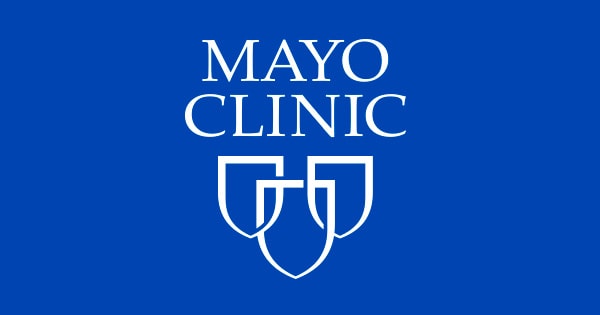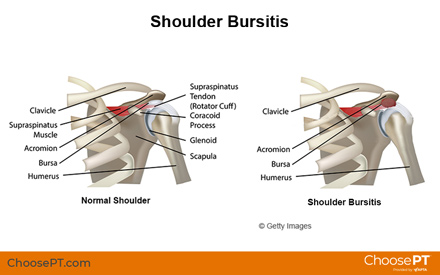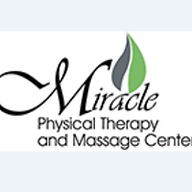Shoulder pain is a common complaint affecting millions of people, whether caused by repetitive movements, aging, or injury. Over time, conservative treatments like physical therapy have emerged as effective ways to manage and even resolve shoulder discomfort without resorting to invasive procedures.

The shoulder is the most mobile joint in the body, which makes it highly versatile but also prone to injury. Common causes of shoulder pain include:
- Rotator Cuff Tendonitis and Tears: Inflammation or tearing of the group of muscles and tendons that stabilize the shoulder can lead to pain and weakness. These conditions are often the result of repetitive stress or acute injury.
- Adhesive Capsulitis (Frozen Shoulder): This condition occurs when the shoulder capsule thickens and contracts, limiting movement and causing pain.
- Shoulder Impingement: Occurs when the tendons or bursa (fluid-filled sacs) get pinched between the bones during movement.
- Bursitis: Inflammation of the bursa can cause sharp pain on the outer side or tip of the shoulder.
- Arthritis: Conditions like osteoarthritis or rheumatoid arthritis can lead to joint degeneration and chronic pain.
Understanding these causes is crucial because the effectiveness of physical therapy depends on addressing the specific underlying issue. For example, while Mayo Clinic explains how exercise can ease arthritis pain by improving joint function, Harvard Health highlights the importance of gradually restoring movement in frozen shoulder cases.
Imagine the shoulder joint as a sophisticated hinge supported by a complex network of muscles, tendons, and ligaments. When one part of this network becomes weak or injured, it disrupts the entire system. Physical therapy works by rebalancing these structures through targeted exercises, much like a mechanic fine-tuning the parts of a car to ensure smooth performance.
Physical Therapy in Shoulder Pain Management
Physical therapy is one of the first lines of defense against shoulder pain. It involves a combination of:
- Manual Therapy: Hands-on techniques where therapists use their skills to mobilize joints and soft tissues.
- Stretching and Range-of-Motion Exercises: These help restore flexibility and reduce stiffness.
- Strengthening Exercises: Target the muscles around the shoulder, especially the rotator cuff and scapular stabilizers, to support proper joint mechanics.
- Education: Teaching proper movement patterns and posture to prevent future injuries.
For instance, Beaumont Health emphasizes that physical therapy not only alleviates pain but also enhances daily functionality by improving strength and mobility. Similarly, Impact Physical Therapy explains that a personalized exercise program can be pivotal in regaining movement and reducing discomfort.
Why Physical Therapy Is Often the Preferred Choice
- Non-Invasive and Conservative: Physical therapy avoids the risks and recovery time associated with surgery.
- Tailored to the Individual: Programs are customized based on a person’s specific condition, physical limitations, and goals.
- Proven Effectiveness: Many studies show that consistent physical therapy can significantly improve shoulder function and reduce pain. For example, research highlighted by PT Solutions indicates that conservative care can be as effective as surgical interventions in many cases.
- Prehabilitation Benefits: Even if surgery becomes necessary, physical therapy before and after the procedure (known as prehab and rehab) helps improve outcomes by strengthening the shoulder and speeding up recovery.
Effective Physical Therapy Exercises for Shoulder Pain
Physical therapy for shoulder pain isn’t a one-size-fits-all solution. Instead, it comprises a series of carefully designed exercises that target various aspects of shoulder function. Here are some of the key exercise types:
Stretching and Flexibility Exercises
Stretching helps maintain and improve the range of motion in the shoulder joint. Simple stretches might include:
- Cross-Body Arm Stretch: Extend one arm across the body and use the opposite hand to gently pull it closer, which helps loosen the muscles in the upper back and shoulder.
- Doorway Stretch: Stand in a doorway, place your hands on the frame, and lean forward to stretch the chest and front shoulder muscles.
These stretches are beneficial for conditions like frozen shoulder, as described by Harvard Health.
Strengthening Exercises
Strengthening exercises aim to build the muscles that support the shoulder, particularly the rotator cuff and the muscles that stabilize the scapula. Some common exercises include:
- Resistance Band Rotations: Using a resistance band to perform internal and external rotations strengthens the rotator cuff muscles.
- Dumbbell Lateral Raises: Lifting light weights to the side improves shoulder stability and prevents imbalances.
- Isometric Shoulder Contractions: Pressing against an immovable object helps build strength without excessive joint movement, which is particularly useful when pain is severe.
According to Healthline, these exercises are typically performed several times a week and gradually progressed to avoid overloading the shoulder.
Manual Therapy and Modalities
Physical therapists often complement exercise programs with manual techniques such as:
- Joint Mobilization: Gentle movements applied to the joint can enhance mobility and reduce stiffness.
- Soft Tissue Massage: Helps relieve muscle tension and improves blood flow to the affected area.
- Heat and Ice Therapy: Alternating heat and cold can reduce inflammation and alleviate pain before or after exercise sessions.
HSS outlines that these modalities are essential in preparing the shoulder for exercise and speeding up the recovery process.
Comprehensive Home Exercise Programs
Many clinics provide detailed home exercise programs to ensure that the benefits of in-clinic sessions continue between appointments. These programs often include:
- A Series of Stretching Routines: To improve flexibility.
- Strength-Building Movements: To gradually enhance muscle support around the joint.
- Functional Training: Exercises that simulate everyday activities to ensure smooth transition back to normal life.
Miracle Rehab Clinic suggests that consistency is key; performing these exercises regularly can lead to significant improvements over a few weeks.
The Science Behind Physical Therapy for Shoulder Pain
A major contributor to shoulder pain is muscle imbalance. When certain muscles around the shoulder are weak or overly tight, the joint becomes unstable, leading to pain and injury. Strengthening exercises help restore balance, allowing the joint to function properly. This mechanism is supported by research from institutions such as PT Solutions, which has shown that a structured exercise program can reduce pain by enhancing muscle strength and coordination.
Restricted movement in the shoulder joint often leads to pain and stiffness. Regular stretching and mobility exercises work by gradually increasing the joint’s range of motion, reducing the risk of further injury. Healthline notes that even small improvements in flexibility can lead to significant reductions in pain over time.
Exercise has a natural anti-inflammatory effect. By increasing blood flow to the affected area, physical therapy exercises help reduce inflammation and accelerate healing. This is particularly important in conditions like rotator cuff tendonitis and bursitis, where inflammation plays a key role in pain. Harvard Health explains that gentle, progressive exercises can help “unfreeze” the shoulder by breaking down adhesions in the joint capsule.
Beyond the physical benefits, engaging in a structured exercise program has positive psychological effects. Knowing that progress is being made can boost confidence, reduce fear of movement, and improve overall quality of life. Studies suggest that patients who adhere to a physical therapy regimen experience not only reduced pain but also improved mood and functional capacity, a sentiment echoed in the experiences shared by patients at Atx Physical Therapy.
When Physical Therapy Might Fall Short?
While many patients experience significant relief through physical therapy, it’s important to acknowledge that the approach may not be universally effective. Several factors can influence outcomes:
Structural and Advanced Degenerative Issues
In some cases, severe structural problems such as significant rotator cuff tears, advanced osteoarthritis, or chronic ligament instability may limit the benefits of conservative treatment. When these conditions are present, physical therapy may serve as a bridge to surgery rather than a complete solution. Even then, pre- and post-surgical physical therapy is critical for optimal recovery. Orthobethesda highlights that while physical therapy can often prevent surgery, there are cases where it simply isn’t enough.
Patient Adherence and Technique
The success of any physical therapy program largely depends on the patient’s adherence to the prescribed exercises and proper technique. Without consistent practice and correct execution, even the best-designed program may fail to produce lasting results. Research from Evidence Physical Therapy suggests that a significant proportion of therapy failures are linked to non-adherence or improper performance of exercises.
The Limitations of a “One-Size-Fits-All” Approach
Not all shoulder pain is the same, and neither is every patient. A generic exercise routine may not address the unique challenges faced by individuals with specific injuries or conditions. That’s why personalization is key. A physical therapist will assess your specific condition—whether it’s impingement, bursitis, or tendonitis—and design a program tailored to your needs. This customization is critical for achieving long-term success.
Tips for Getting the Most Out of Physical Therapy
If physical therapy is part of the plan to manage shoulder pain, here are several tips to ensure the best possible outcomes:
Consistency Is Crucial. Regularly performing the prescribed exercises is essential. Even if progress seems slow at first, sticking with the program can lead to significant improvements over time. It’s often recommended to engage in therapy exercises several times per week, if not daily, depending on the severity of the condition.
Listen to Your Body. While some discomfort is normal as the muscles strengthen and the joint moves more freely, sharp pain is a warning sign. Always communicate with your therapist if an exercise causes pain beyond normal muscle fatigue. Adjustments may be necessary to avoid exacerbating the injury.
Focus on Technique. Proper form is more important than the number of repetitions. Incorrect technique can not only reduce the effectiveness of the exercise but also risk further injury. A physical therapist can demonstrate the correct form and monitor progress to ensure exercises are performed safely.
Integrate Manual Therapy and Modalities. Physical therapy isn’t just about exercises. Techniques such as manual therapy, massage, and the use of heat or ice can help reduce inflammation and improve mobility. Combining these modalities with a regular exercise routine enhances overall effectiveness.
Set Realistic Goals. Improvement in shoulder function and pain relief is often gradual. Setting short-term, achievable goals can help maintain motivation. Celebrate small victories, whether it’s an increased range of motion or reduced pain during daily activities.
Educate Yourself. Understanding the anatomy of the shoulder and the mechanics behind your pain can be empowering. It provides context for why certain exercises are recommended and how they work to correct imbalances. Resources like ChoosePT offer valuable information on common shoulder conditions and the role of physical therapy.
Numerous studies and patient testimonials support the effectiveness of physical therapy for shoulder pain. Here are a few key insights:
Research Supports Conservative Treatment
Studies have consistently shown that physical therapy can be as effective as surgical interventions for many shoulder conditions. For instance, research from PT Solutions found that a well-structured physical therapy program significantly reduced pain and improved function in patients with shoulder arthritis and rotator cuff issues.
Prehabilitation Benefits
Patients who undergo physical therapy before surgery (prehabilitation) often experience faster recovery times and better post-surgical outcomes. Strengthening and conditioning the shoulder in advance prepares the body for surgery and minimizes the risk of complications afterward, a point emphasized by Orthobethesda.
Patient Testimonials
Many individuals have shared positive experiences with physical therapy, reporting substantial improvements in mobility and pain relief. Patients have noted that even if complete resolution of pain isn’t achieved immediately, the reduction in discomfort and increase in function can lead to a significantly better quality of life. Insights from Atx Physical Therapy illustrate that while results vary, a majority of patients find physical therapy to be a vital component of their recovery journey.
The Role of Self-Management
Effective physical therapy not only treats the current pain but also equips patients with tools to manage their condition long-term. A combination of exercises, proper technique, and lifestyle modifications helps prevent recurrence. Research summarized by Healthline emphasizes that self-management through regular exercise and posture correction is key to sustained improvement.
When to Consider Additional Interventions
While physical therapy can be highly effective, there are situations when additional medical interventions might be necessary:
When Conservative Measures Aren’t Enough
If shoulder pain persists despite months of dedicated physical therapy, it may be a sign of more severe underlying issues such as a large rotator cuff tear or significant joint degeneration. In such cases, advanced imaging tests like MRIs may be required to assess the damage. Although surgery might become necessary, physical therapy remains crucial both before and after surgical interventions to optimize recovery.
Recognizing the Signs of Structural Damage
Certain symptoms—such as a sudden increase in pain, significant weakness, or noticeable instability in the shoulder—warrant prompt medical evaluation. These could be indicators that the injury is beyond what conservative management can resolve. However, even if surgery is recommended, many experts advocate for a trial of physical therapy first, as it can sometimes delay or even eliminate the need for surgery.
Integrating Other Treatments
In some cases, a multidisciplinary approach that includes physical therapy, medications (such as nonsteroidal anti-inflammatory drugs), and injections may provide the best results. For example, corticosteroid injections can help reduce inflammation, making physical therapy exercises more tolerable and effective. The combination of these treatments is often tailored to the patient’s unique needs, as highlighted by Evidence Physical Therapy.
Practical Advice for a Successful Recovery
If you’re embarking on a physical therapy program for shoulder pain, consider these practical tips to enhance your recovery:
- Be Consistent: Adherence to your exercise regimen is key. Even on days when progress seems slow, regular practice builds strength and improves mobility over time.
- Work With a Qualified Therapist: A licensed physical therapist can provide a personalized program that addresses your specific challenges and monitors your progress, ensuring that you perform exercises correctly and safely.
- Progress Gradually: Avoid the temptation to overdo it. Incremental progress helps prevent re-injury and allows your shoulder to adapt to increased loads and movements.
- Focus on Whole-Body Health: Sometimes shoulder pain is a symptom of broader issues such as overall muscle weakness or poor posture. Incorporating exercises that strengthen the core, back, and other supporting muscles can make a significant difference.
- Stay Informed: Keep up with the latest research and recommendations. Trusted sources like Mayo Clinic and Harvard Health offer valuable insights that can help you understand your condition better and advocate for your health.
- Modify Your Daily Activities: Sometimes, minor adjustments in the way daily tasks are performed can reduce shoulder strain. Simple changes like using proper ergonomics at work or during exercise can contribute to long-term pain relief.
Final Thoughts
The evidence is clear: physical therapy exercises can play a significant role in reducing shoulder pain and improving overall function. While the journey to recovery may require time and persistence, the benefits of a well-structured physical therapy program are well worth the effort. By targeting muscle imbalances, restoring range of motion, and enhancing joint stability, physical therapy not only alleviates pain but also helps prevent future injuries.
It is important to remember that every shoulder injury is unique. Therefore, a personalized treatment plan, guided by a skilled physical therapist, is essential for achieving the best outcomes. Even in cases where surgery is eventually needed, physical therapy remains a critical part of the rehabilitation process.
Ultimately, the decision to pursue physical therapy should be made in consultation with healthcare professionals who can evaluate the specifics of your condition and tailor a treatment strategy accordingly. For many, the non-invasive, cost-effective, and empowering nature of physical therapy makes it an appealing option for managing shoulder pain and reclaiming a life free from discomfort.
While every effort has been made to ensure the accuracy of the information provided, this article should not replace professional consultation. Always talk to a healthcare provider for medical advice.
Sources:
























